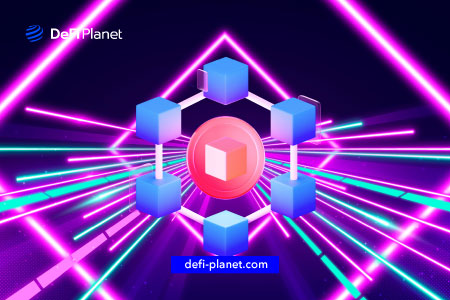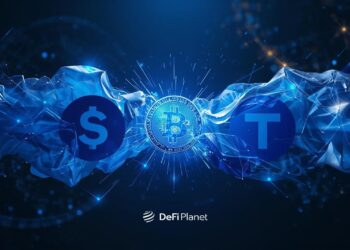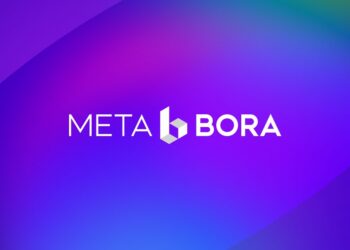Last updated on November 17th, 2022 at 01:39 pm
Decentralized Finance (DeFi) is an important aspect of blockchain technology, as it offers both regular and new financial instruments that possess the element of decentralization. As the DeFi space grows, more financial options are emerging, such as yield farming, GameFi, asset management, tokenization, decentralized exchange, and much more.
Decentralized Finance is popular among crypto enthusiasts because, in most cases, it eliminates the need for centralized authority.
This article explores the various features of DeFi available to the average crypto user.
Elements of Decentralized Finance
DeFi platforms tend to offer complex features. Some are designed to allow users to swap tokens without needing a centralized authority. In some cases, crypto enthusiasts can inject liquidity into any of the pools in the ecosystem. DeFi platforms may also come in the form of decentralized lending opportunities.
• Synthetic Assets Platforms
Derivatives may be a common feature in traditional finance, but they have also found their way to the decentralized finance space.
Synthetic assets are representations of underlying assets. Staking Proof-of-Stake (PoS) tokens, for example, can result in illiquidity for users. Binding tokens to the network during staking removes them from circulation for the duration of the staking period.
During that time, the user cannot access their assets or utilize the tokens to trade or engage in other transactions. This is a problem that a synthetic asset staking platform seeks to solve.
The concept of liquid staking means that users can stake while still having access to synthetic assets for other transactions.
StaFi users can stake their PoS tokens on the network and gain access to synthetic assets in the form of rTokens.
They earn rewards on the underlying tokens they stake while retaining the option to exchange or lend their synthetic tokens. Eventually, they swap the rTokens for the underlying tokens staked and their returns. One of the numerous synthetic asset staking protocols is StaFi. The Synthetix platform is another example.
Decentralized Autonomous Organizations (DAOs)
Decentralized Autonomous Organizations are becoming an important aspect of DeFi in various ways.
Some DAOs are involved in raising funds for innovative projects. In this case, they may serve as a crowdfunding platform, bridging innovative projects and potential investors. Usually, projects are vetted before they are allowed to raise funds on such platforms.
Prospective investors are sometimes required to complete various tasks to qualify for a spot. This is to ensure that only serious crypto enthusiasts obtain the available spots.
Secondly, a DAO may be created as a venture capitalist firm to finance crypto startups. Community members contribute money and buy the native tokens of a DeFi platform during private or seed rounds. Sometimes, this may be the sole purpose of this type of organization.
Thirdly, DAOs may be formed to act as a development platform for decentralized finance platforms. In this case, it may be a DAO made up of DeFi protocol developers.
Fourthly, sometimes, a Decentralized Finance platform may be a DAO. An example is Nexus Mutual, which acts as a DAO, with the NXM token as the native token. With the token, users can vote on potential changes in the platform. Before insurance coverage is paid out, community members have to vote on it.
Insurance
With the volatility of the crypto space, the need for insurance has increased. A decentralized insurance platform may offer a single form of protection like Nexus Mutual, while others may cater to several classes of risks like Risk Harbor.
Nexus Mutual offers smart contract coverage. It markets itself as an insurance alternative scheme rather than a standard insurance platform. Using this protocol does not confer the contract of insurance on Nexus Mutual.
Smart contract cover indicates that if the exploitation of a platform is linked to an issue with their smart contract address, the insurance platform may be required to cover the losses to a certain extent based on the terms and conditions.
A smart contract attack is one of the ways that people lose funds, and in some cases, it can be permanent. One of the risks crypto users face when using DeFi protocols is the risk that hackers will exploit the smart contract.
When a DeFi protocol has smart contract coverage, it encourages more investors to use its services as they are reassured that they can access their funds even when an attack occurs.
Risk Harbor, on the other hand, is a risk management marketplace that caters to a wide array of crypto-related risks. Unlike Nexus Mutual, it does not offer only one toe of protection and is not a DAO. In the case of Risk Harbor, the payout is automatic and does not require intermediaries to vote on whether coverage should be paid out when an incident occurs.
The claim assessment claims to be transparent, and their payouts are instant. They see themselves as a parametric insurance platform that immediately pays once the covered event occurs.
For instance, Risk Harbor paid out those purchasing depeg insurance coverage on the decentralized insurance platform.
A Twitter user noted,
“In the aftermath of the $UST depeg there is one ray of light. @riskharbor depeg insurance on $UST paid out programmatically exactly as designed allowing those who bought cover to swap into $USDC. The future of insurance is decentralized and permissionless anon.”
Risk Harbor is said to have paid $2.5 million to those that took out the $UST depeg coverage.
According to a tweet, “Risk Harbor appears to have had the best $UST depeg coverage by far. ????
Approx $2.5m has been paid to those who underwrote. Reimbursement occurred when $UST peg went <$0.95 per @chainlink, allowing holders to automatically swap their wrapped aUST for $USDC.”
Decentralized Exchange
Another aspect of Decentralized Finance is a decentralized exchange or DEX. This type of DeFi platform allows users to swap tokens without the presence of a centralised authority. It is a cryptocurrency exchange that is not governed by custodial authorities. It can consist of enthusiasts trading with one another or a smart contract. The former is a peer-to-peer (P2P) exchange, while the latter is an Automated Market Maker (AMM).
Different types of decentralized exchanges exist, but they all share the element that allows users to trade without the involvement of a centralized authority. Examples of decentralized exchanges include UniSwap, Pancakeswap, Fomo Dex, and Sushiswap.
A DEX may be a peer-to-peer trading platform or an Automated Market Maker (AMM).
Gaming
Another notable aspect of decentralized finance is GameFi, an acronym for Game and Finance. This ecosystem is focused on incorporating financial architecture into gaming. In a Play-to-Earn gaming platform, users can earn returns from participating in different activities in gameplay.
These rewards may come in the form of NFTs or cryptocurrencies that can be traded on an NFT marketplace or crypto exchange, respectively.
Some GameFi platforms have created a structure to allow users to stake their in-game assets or NFTs to earn recurring rewards.
A GameFi ecosystem may come in the form of a gaming guild. Crypto gaming guilds are platforms that allow both new and experienced gamers to interact with one another. Usually, this type of gaming guild supports new gamers with scholarships, tutorials, and much more for multiple play-to-earn (P2E) games. An example is Yield Guild Games (YGG).
Many of these platforms provide the initial minimum requirements for gamers in various NFT gaming ecosystems, such as Axies, and strategies to win in the game. Typically, gaming guilds offer community interaction, scholarships, earning opportunities, and much more.
Decentralized Lending
A Decentralized Finance protocol may offer crypto lending services to its users, acting as a bridge between borrowers and lenders. Crypto enthusiasts may have idle funds in their wallets that they are not trading or staking and decide to offer them as liquidity to a crypto lending platform. In return, the crypto lending platform pays them the interest earned from lending funds to borrowers.
Every crypto lending service operates under different parameters.
A crypto lending service may take the form of a decentralized finance lending platform, which requires borrowers to constantly ensure that their collateral amount is above a particular threshold to avoid liquidation. The over-collateralization model is prevalent in DeFi lending services.
If borrowers want to access their collateral, they must repay the loan and the interest. Unlike the loans mentioned above, certain loans do not require collateral and are referred to as “flash loans.”
Flash loans guarantee payment on the same transaction. If a user cannot pay in the same transaction, their loan transaction is reversed.
In Conclusion,
- Decentralized Finance (DeFi) is a broad term encompassing different financial activities without a centralized authority’s interference.
- A DeFi protocol may be a decentralized exchange that allows users to swap tokens without stress.
- DeFi Protocols may also be a decentralized lending platform where borrowers and lenders can interact.
- Sometimes, it may be a decentralized insurance ecosystem.
- Every day, new use cases emerge in the DeFi space.
If you would like to read more articles like this, visit DeFi Planet and follow us on Twitter, LinkedIn, Facebook, and Instagram.
“Take control of your crypto portfolio with MARKETS PRO, DeFi Planet’s suite of analytics tools”





















